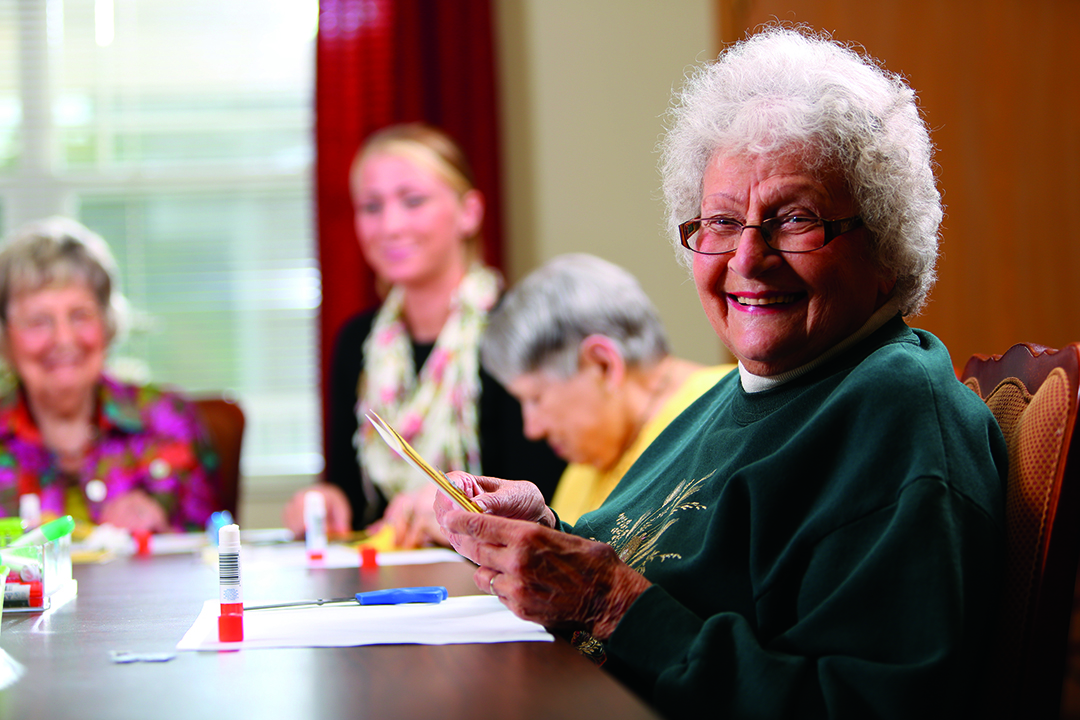Do you get the winter blues? If you do, it turns out that you are not alone. Feelings of sadness that seem hard to shake during the winter months are more common than you might think. While it isn’t winter yet, the cold days are quickly approaching, and for many, the cold and dark of the winter months make life a misery. Seasonal Affective Disorder, or SAD, is a form of depression that cycles with seasonal changes, typically causing symptoms such as a loss of energy, an increased appetite, and an overall feeling of tiredness. Since our goal at Senior Lifestyle is to optimize the overall health and well-being of seniors, our communities use specific tools and activities designed to lessen the effects of SAD.
Researchers at Mayo Clinic say that the decline in the amount of daylight during fall and winter is to blame for SAD and note that this form of depression is more common in northern areas. While hazards like slips and falls and hypothermia often top the list of concerns for caregivers of seniors during winter months, our older loved ones are also at risk for Seasonal Affective Disorder, as well as vitamin D deficiency, both linked to lack of exposure to the sun. For some seniors, this is compounded by fears of being outside in the icy cold weather and risking a fall. If a senior is homebound or uses an assistive device like a cane or a walker, getting outside for some sunshine in the winter can be very difficult. Many of our Senior Lifestyle communities are designed specifically to maximize natural light, an important element in combatting Seasonal Affective Disorder. Since isolation is a factor in depressive symptoms for many seniors, light-filled common areas abound in our communities, perfect settings for conversation and games.
The good news is that there are some simple things caregivers can do to mitigate the effects of the “winter blues”. Mayo Clinic recommends making lifestyle changes to manage SAD with some easy home remedies. Sometimes, small changes in the indoor environment can help. Moving a bed closer to the window, opening curtains and blinds to allow in more natural light, and adding bright colors and plants can help. Some people find that adding physical exercise like walking is a good remedy, along with eating a well-balanced diet, which helps to combat vitamin D deficiency as well. Certainly, if the weather permits, taking a stroll outside in the sunshine is also a great idea! Popular features of many of our Senior Lifestyle communities are the outdoor courtyard sitting areas and walking paths.
For sufferers of Seasonal Affective Disorder who can’t get out, light therapy is an alternative. This therapy uses a “light box” which is just a fluorescent lamp that mimics natural sunlight. The user simply turns on the lamp and sits in front of it for a specified time each day. It’s important to speak with a healthcare professional as you look into purchasing a light box to learn which one will work best for you and your situation.
While it’s more than just a case of the “winter blues”, Seasonal Affective Disorder can often be controlled with some lifestyle adaptations and easily managed changes. To learn more about our fall and winter activities at a Senior Lifestyle community near you, please visit our website at www.seniorlifestyle.com.

